This story was co-published with Slate.
Introduction
PORTSMOUTH, Ohio — Paul Brogdon was a security guard at the Portsmouth Gaseous Diffusion Plant during the last stages of the Cold War, protecting stockpiles of bomb-grade uranium from would-be terrorists.
Brogdon and the other guards would take their turns in the Blue Goose, an armored box truck used to transport cylinders of highly enriched uranium from Building 326, the final stop in the production chain, to a vault within Building 345, a distance of about a half-mile. They would sit inches from the cylinders, which gave off radiation, and had to stay in the truck until it was unloaded, a process that could take an hour or more. They wore no protective gear apart from their uniforms.
Other times, they would be posted just beyond what they cynically called the “magic tape” — the yellow plastic tape used to demarcate contaminated areas of the plant. Workers inside the tape wore hazmat suits and supplied-air respirators. The guards had no such equipment.
“We were non-people,” said Brogdon, 71.
After retiring, Brogdon and at least eight other former guards developed prostate cancer, which they blame on radiation exposures at Portsmouth. Fifteen years ago, Congress created a compensation program for people like them.
But they have not fared well. Brogdon and others who filed claims saw them denied by the U.S. Department of Labor, which has the authority to provide lump-sum payments and cover medical care for ex-employees of the U.S. nuclear weapons complex who fell ill after working in environments where production trumped safety. Many other civilian veterans of the Cold War are similarly demoralized, having failed to navigate a Byzantine program, troubled from the start, that tries to estimate toxic exposures at secrecy-cloaked sites where records often were lost, destroyed, falsified — or simply didn’t exist.
“A lot of claimants have no confidence in the records,” said Malcolm D. Nelson, the Labor Department’s ombudsman for the program.
It’s not that the department never approves claims. Compared with state workers’ compensation programs, which have an abysmal record dealing with complex occupational illness, the payout is notable: $12 billion in more than 74,000 cases since 2000.
But nearly half the cases over that period have been turned down. The denial rate would be even higher if not for exemptions carved out for certain groups of workers.
Brogdon was undone by a dose reconstruction — an attempt by federal health officials to estimate his radiation dose over time. The results of this exercise, overseen by the National Institute for Occupational Safety and Health, or NIOSH, inform a “probability of causation” assigned by the Labor Department. If the department decides there is at least a 50 percent chance a claimant’s cancer was caused by radiation exposure, the claim is approved. Brogdon never came close to this threshold.
Nationwide, almost two-thirds of the cases involving dose reconstruction have been rejected by the Labor Department. For Portsmouth claimants, the denials are particularly objectionable given the plant’s history. Dubious recordkeeping practices and erratic radiation monitoring suggest assumptions made by NIOSH for dose reconstructions are way off, they say, leading to unwarranted denial of claims.
“Garbage in, garbage out,” said David Manuta, who was chief scientist at Portsmouth from 1990 to 2000 and now runs a safety consulting firm. “If your input variables are lousy, your output will be lousy.”
Stuart Hinnefeld, director of NIOSH’s Division of Compensation Analysis and Support, said the agency only goes forward with a dose reconstruction if it thinks there’s sufficient information to determine the highest possible dose a worker may have received.
“It doesn’t give me any pleasure to turn out a dose reconstruction with a [probability of causation] less than 50 percent,” he said.
For claims alleging injuries from chemicals, linking exposure and disease can be particularly daunting. The burden of proof, some physicians and scientists say, is unreasonably high. For instance, the Center for Public Integrity found that when Labor Department officials ask their staff toxicologist to weigh in on causation because the program hadn’t already accepted a link, she almost never agrees with the claimant.
Officials with the Labor Department’s Division of Energy Employees Occupational Illness Compensation say that both they and NIOSH are following the rules of a program that was never intended to compensate everyone who developed cancer or other diseases. Approvals are higher than initial expectations, they say.
“We have to evaluate the likelihood that this cancer is due to work or not due to work, and … there [are] always going to be people that are going to get an answer that they don’t want to hear,” said John Vance, the program’s policy chief. “It’s the perfect intersection of politics, science, human emotion and all of that. It’s a difficult, difficult situation.”
Some members of Congress are unpersuaded.
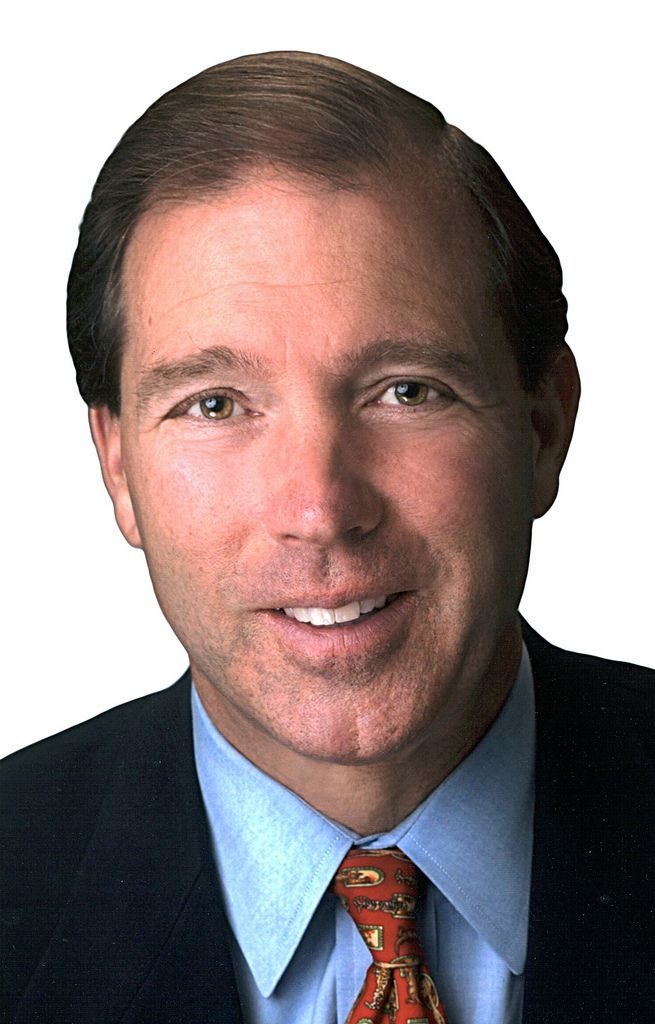
“Over the years, [the program] has been plagued with delays and bureaucratic hurdles,” U.S. Sen. Tom Udall, a Democrat from New Mexico, told the Center in an emailed statement. The Labor Department frequently updates its rules, “often adding steps to the process and making it harder to prove a case,” he wrote. The agency proposed more rule changes just a few weeks ago.
“Too often, workers die waiting for compensation that they never receive,” Udall wrote. “Congress didn’t intend for the … process to be so burdensome.”
He has repeatedly tried to change the way the program operates. Most of the bills he sponsored or co-sponsored fizzled, but last year Congress required the creation of an advisory board for the chemical-exposure side of the program. It’s in “dire need of increased oversight,” he wrote.
The Labor Department expects to choose board members from a nominee list next year.
‘In harm’s way’
What prompted the compensation program was a scandal decades in the making. At nuclear-weapons sites run by contractors for the U.S. Department of Energy and its predecessors, home to some of the most dangerous substances on earth, officials routinely risked their employees’ health.
Workers were exposed “without their knowledge and consent,” Congress would later determine, “driven by fears of adverse publicity, liability, and employee demands for hazardous duty pay.”
In February 1989, retired admiral and energy secretary designee James Watkins told a Senate committee that the Energy Department was a “mess” and that “problems relating to safety, health and the environment have not only been backlogged to intolerable levels but, in effect, hidden from public view until recently. So we are now paying the price.”
Joy Stokes and Faye Stubbs, who worked as custodians and held other jobs at the Energy Department’s Mound plant near Dayton, Ohio, described episodes they say illustrate a cavalier attitude toward safety.
Stokes said she was ordered to clean a laboratory fume hood — which she later learned was “screaming hot” with radiation — without respiratory or skin protection. As a truck driver, Stubbs hauled containers of solvents and barrels of radioactive dirt and was similarly unprotected, she said. Both say managers played down their exposures and eventually took away their dosimeters — badges that measure personal radiation doses. “We were disposable, I guess,” Stokes said. Both filed unsuccessful compensation claims.

More than 600,000 people worked throughout the weapons complex during the Cold War. When sick employees filed for workers’ compensation with their state programs, the Energy Department directed its contractors to fight the claims. Millions of taxpayer dollars were spent on that effort.
Bit by bit, suppression stopped working. Whistleblowers came forward. The Government Accountability Project and other groups dug into the issue. And elected officials were not happy to hear how the complex had treated the people who made it run.
The legislation that launched the Energy Employees Occupational Illness Compensation Program passed with bipartisan support, but the use of dose reconstruction to make determinations in radiation cases was included over the objections of some House leaders. Cindy Blackston, who served on the staff of the House Judiciary Committee from 1980 to 2007 and closely monitored the program, said the panel expressed concerns during negotiations and “continually thereafter.”
“This is a program to address the fact that we put these people in harm’s way,” she said. “Our position was that dose reconstruction and all that was really just a way to keep from paying people.”
The program has two ways in. One, dubbed Part B, pays $150,000 for radiation-triggered cancers and two lung diseases. Part E, for toxic-exposure claims, pays workers for wage loss and impairment — up to $250,000 — while eligible survivors can receive at least $125,000. Both cover medical costs.
Congress, concerned about shoddy recordkeeping and monitoring, did include a method to exempt certain Part B applicants from dose reconstruction. In cases without enough exposure information, groups of workers can be added to the Special Exposure Cohort, their claims automatically accepted if they develop any of 22 cancers.
Portsmouth is among the four sites Congress put in that cohort — though that doesn’t help the ex-guards with prostate cancer, which is not one of the 22 cancers on the list. Petitions and NIOSH’s own efforts have helped expand the special cohort since then. Certain workers at 80 sites are now part of the group, though claimant advocates say the increase hasn’t resolved all the problems they’re seeing.
Problems, in fact, have been the program’s frequent companion. Congress had to amend it in 2004 to put the Labor Department in charge of all claims when the Energy Department — then overseeing the toxic-exposure arm — managed to process only 5 percent of its claims over those first four years.
Then-Rep. John Hostettler, a Republican from Indiana, held hearings in 2006 after the White House’s Office of Management and Budget wrote a memo listing ways to “contain the growth” in benefits paid out. The outraged congressman reminded witnesses at one hearing that the government was to blame for putting the workforce at risk: “Pinching pennies never looked so inappropriate as it does when addressing the plight of these workers.”
Congressional frustration was also behind the creation of the advisory board to weigh in on Part E, which unlike the radiation-focused Part B has not had such a panel.
“We’ve been asking for it for a long, long time,” said Terrie Barrie, a founding member of the Alliance of Nuclear Worker Advocacy Groups, whose husband worked at the Rocky Flats site in Colorado. “I’m trusting the Department of Labor to take their recommendations seriously, not just blow them off and say, ‘Thank you very much.’ ”
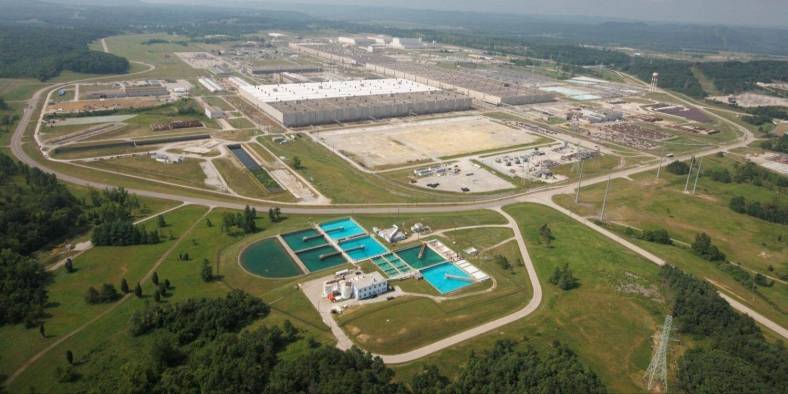
‘Don’t worry, you can eat this stuff’
The Portsmouth Gaseous Diffusion Plant — in Piketon, Ohio, about 25 miles north of the Ohio River city of Portsmouth — was built by the U.S. Atomic Energy Commission and began operation in 1954. The 3,700-acre site included three process buildings “comparable in size to three Yankee Stadiums and a football field,” according to the Energy Department, an AEC successor.
The process itself went as follows: Less than 1 percent of naturally occurring uranium contains the U-235 isotope needed to generate power or make bombs. Therefore, it had to be “enriched.” First at the Paducah Gaseous Diffusion Plant in Kentucky and later at Portsmouth, gaseous uranium hexafluoride was forced through a series of porous membranes to separate molecules containing U-235 from those containing U-238. By the time the product arrived in solid form at Portsmouth, its U-235 content, or assay, was under 3 percent. When it left Building 326 in cylinders, it was weapons-grade: up to 97 percent assay.
The plant, which ceased production in 2001, was operated by a series of contractors: Goodyear Atomic, Martin Marietta, Lockheed Martin and the United States Enrichment Corporation. In the early 1980s — as tensions escalated between the United States and what was then the Soviet Union — management at Portsmouth sought to professionalize the security force. It hired military veterans with law-enforcement experience and pitted them against the Navy SEALS and the Army’s Delta Force in training exercises.
Charles “Chick” Lawson, who’d been a K-9 officer in the Air Force, was hired in 1984. As Lawson settled into the job, he grew troubled by what he believed to be safety lapses.
When the Blue Goose, for example, would leave Building 326 carrying cylinders of highly enriched uranium — carefully spaced to keep them from triggering an uncontrolled chain reaction, known as a criticality accident — “every criticality alarm we passed we set off,” Lawson said. The alarms would go off again when the truck pulled into Building 345.
Managers claimed these were merely equipment malfunctions, Lawson said. His response: “That’s not a malfunction. Something’s going on over here.”
Several years in, Lawson ran for local safety officer with his union, known at the time as United Plant Guard Workers of America. He won and stayed in the job for a decade, frequently knocking heads with managers.
“When I was hired in ’84, they were telling people, ‘If there’s an outgassing [of radiation], don’t worry, you can eat this stuff. Go home and drink a beer and you can pee it out,’ ” he said. “After I became safety officer I began asking a lot of questions.”
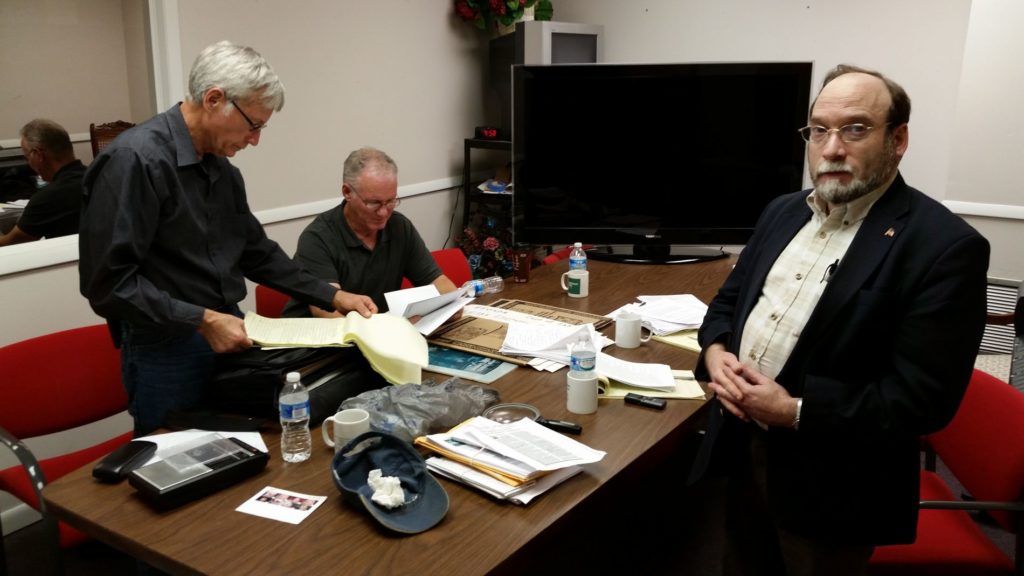
His queries, combined with a chemical accident that sent a fellow guard, Jeff Walburn, to the hospital for 11 days in 1994, prompted NIOSH visits to the plant in 1996 and 1997. John Cardarelli, who held a master’s in health physics — the study of radiation’s effects on the human body — led the inquiry. His task was to determine whether exposures to neutron radiation, a byproduct of highly enriched uranium considered more dangerous than other types of ionizing radiation, posed a risk to workers at Portsmouth.
Management had deemed such exposures so insignificant that employees weren’t required to wear neutron dosimeters during the plant’s first 38 years. (They did wear dosimeters that recorded alpha, beta and gamma radiation.)
In his final report, Cardarelli concluded that “under certain conditions an acute exposure to neutron radiation can occur” at Portsmouth, creating a potential health hazard. He highlighted a phenomenon the industry called “slow cookers” — buildups of uranium within the cascade of gas centrifuges used in the enrichment process that gave off excess neutrons.
Cardarelli noted that recordkeeping procedures at the plant made it hard to determine just how high historical neutron exposures may have been. Archive tapes containing older dosimetry data were reused, the data overwritten and unrecoverable. Abnormally high radiation doses were dismissed as anomalies and blamed on “equipment failure.” And doses that couldn’t be linked to a particular person were dumped into a computerized account, known as a “bucket dose” account, with no follow-up investigation. This practice, combined with questionable assumptions about levels of “background” radiation in the plant, “will eventually lead to an artificially low dose history for the facility,” Cardarelli wrote.
A 41-page Lockheed Martin report unearthed in an unsuccessful lawsuit by Walburn found that some officials at Portsmouth believed the plant’s dosimetry database was “corrupt.” In a statement to the Center, the company said it had investigated these and other employee allegations and “could not substantiate” them.
In an interview, Cardarelli, now a health physicist with the U.S. Environmental Protection Agency, said he thinks “the workers have a legitimate concern that the dosimetry itself may not have been an accurate predictor of their total dose. I believe the slow cooker phenomenon is real. I also believe that people, as a result of the slow cooker, were exposed to neutrons at levels we cannot determine.”
NIOSH’s Hinnefeld said the agency agrees that the highly enriched uranium handled at Portsmouth “would be, probably, a higher neutron-emitter” than material handled at other plants. “We are investigating that issue and it’s likely that we will make some change and actually increase the amount of neutron addition that we are putting in these dose reconstructions,” he said.
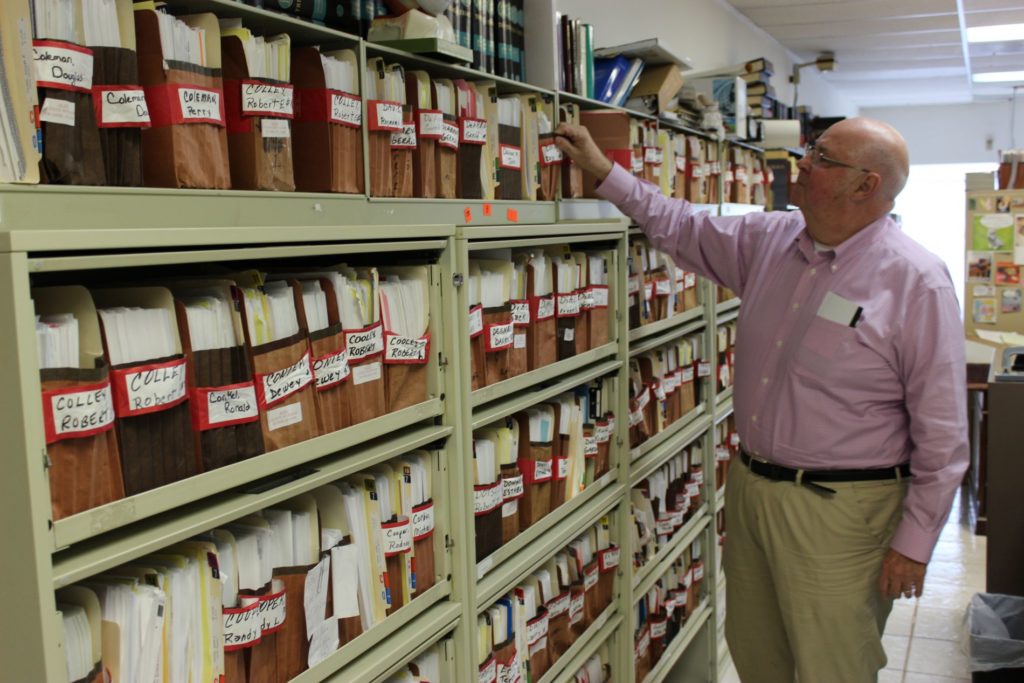
Lawyer Frank Gerlach has represented more than 900 Labor Department claimants, including some of the former Portsmouth guards. NIOSH, he said, “relies on known doctored, falsified dosimetry records.” (The agency said it investigated this allegation and concluded that “some apparent anomalies … are not evidence of falsification of dose records, or reasons to disregard the radiation monitoring results.”)
Energy Department records, Gerlach said, indicate the guards were exposed to far less than 1 Roentgen equivalent man, or rem, per year when in fact “they probably all received 5 to 6 rem per year,” based on employee records reviewed by Lawson while he was union safety officer. The legal limit for radiation exposure in the workplace is 5 rem per year.
Paul Brogdon has had five dose reconstructions. In the first, in 2004, NIOSH noted that the Energy Department showed his “whole body deep dose of record” to be a miniscule 0.078 rem over the entire two decades he worked as a guard. NIOSH, trying to give Brogdon the benefit of the doubt, calculated the dose to his prostate at just over 35 rem. His prostate numbers plummeted in subsequent reconstructions; the probability of causation assigned his claim by the Labor Department fell as a result, from 31 percent to 4 percent.
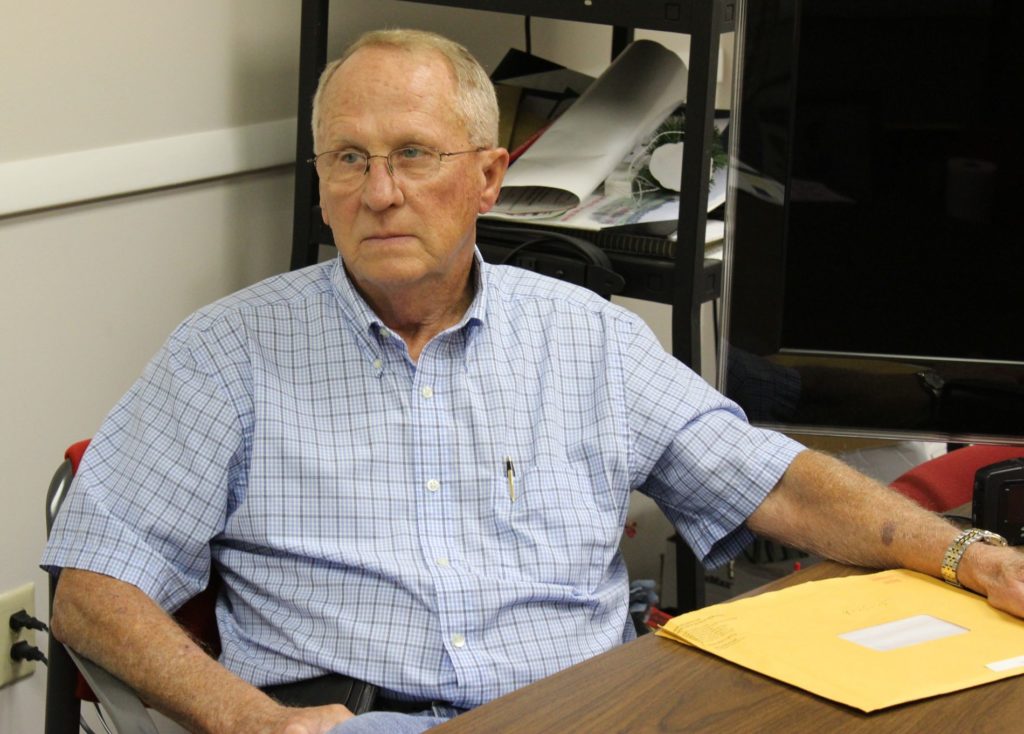
“They might as well go ahead and say, ‘He didn’t get nothing in 21 years,’ ” Brogdon said.
He and other ex-guards told the Center they often worked 12 hours a day, six days a week in some of the “hottest” areas of the plant — on the roof of Building 326, near vent stacks, for example.
Labor Department ombudsman Nelson, who shares complaints in an annual report to Congress without taking a position, said he repeatedly hears from former security guards, firefighters and administrative employees that the compensation program understates their exposures, assuming their responsibilities generally kept them away from hazards. At one plant in Iowa, the program’s records suggest that guards had no contact with toxic substances.
“The complaint by the guards is, ‘Where did you get that information from? We were the first responders whenever there was an accident, we were the first to go, we were the last to leave,’” Nelson said. “The belief by these guards is that [the Labor Department] is imagining that they all sat in a guard shack at the front gate somewhere and didn’t move.”
The science on the relationship between radiation and prostate cancer is inconclusive. One study, for example, found elevated prostate cancer death rates among employees of Britain’s Atomic Energy Authority; another found excess deaths at the Energy Department’s Y-12 weapons plant in Oak Ridge, Tennessee. A National Research Council committee, however, reported that prostate cancer was “not usually thought to be radiation-induced.” Lifestyle factors such as diet and smoking, as well as family history and race or ethnicity, all can play a role in the development of the disease.
NIOSH data show that through September 23, 2015, nearly 97 percent of 4,975 claims nationwide relating to cancers of the “male genitalia,” mostly prostate, had been denied by the Labor Department.
“There’s a very high likelihood regardless, with no radiation exposure, that a male is going to get prostate cancer, particularly as he ages,” said Hinnefeld, of NIOSH. To reach a 50 percent probability of causation, a claimant with the disease would have to show he absorbed a higher radiation dose than victims of many other cancers, Hinnefeld said.
Gerlach, the lawyer, doesn’t dispute the science; rather, he challenges the doses NIOSH has estimated for the ex-guards. “They never believe what a claimant says,” he said. Only if prostate cancer spreads to the bone — one of the 22 cancers allowed in the special exposure cohort — does a victim stand to get a claim approved, said Gerlach, who has won several such cases, none involving guards.
Calvin Parker, who joined the security force at Portsmouth in 1979, was diagnosed with prostate cancer in August 2011. His Labor Department claim was denied in March. Parker’s wife, Lisa, keeps a tally of former guards who died from cancer or other causes; the list includes 33 names — “just the ones we know of” — from a force of around 200 at its peak. She counts nine living victims of prostate cancer, all of whom were diagnosed before age 65 and started at the plant between the mid-1970s and the mid-’80s. Across the general population, about six in 10 cases of the disease are diagnosed in men 65 or older, according to the American Cancer Society.
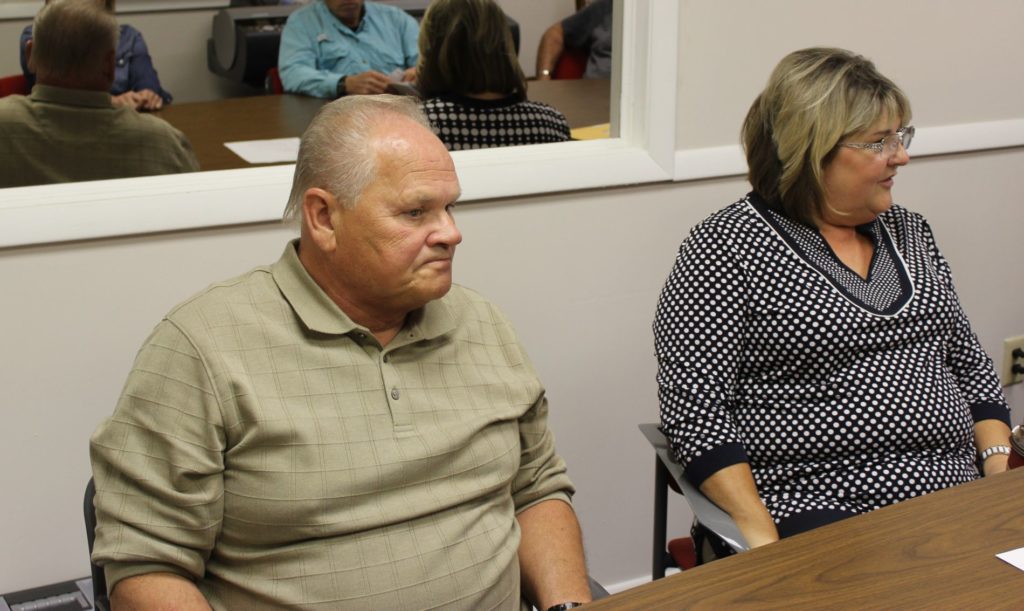
“I don’t believe in coincidence,” said Lisa Parker, who was a guard for part of her 19 years at Portsmouth and received compensation for chronic beryllium disease, a serious lung condition. “The common denominator was the plant. All of us who worked as guards were exposed to highly enriched uranium.”
The prostate-cancer cluster is notable not only for the relative youth of the men at diagnosis but also for the aggressiveness of the disease, Lisa Parker said. Her husband said the level of prostate-specific antigen, or PSA, in his blood doubled within two months of his diagnosis. “It’s usually a very slow-acting cancer,” he said. Other former colleagues had similar spikes over short periods.
So far, however, Calvin Parker has been compensated only for solvent-induced hearing loss.
Brogdon, diagnosed with prostate cancer at 59, covets the program’s medical coverage more than the $150,000 lump sum he might get if his claim were approved. When his PSA count goes up, he said, he has to take a shot that suppresses his testosterone levels, saps his energy and causes hot flashes and night sweats — “just like a woman going through the change.” He can’t afford treatments that could mitigate such effects.
“If I had that medical card,” Brogdon said, “I wouldn’t feel like hell all the time.”

Roadblock for claimants
Bob Haller spent 28 years as a custodian, laundry worker and demolition technician at the Mound plant. After developing cerebellar ataxia — a nervous-system disorder that interferes with balance, speech and other motor behavior — he filed a claim with the Labor Department. He and his doctor blamed the disorder on exposure to the solvent trichloroethylene and other substances used at the plant. But he was turned down multiple times.
David Manuta, the Portsmouth scientist-turned-consultant who estimates he has helped several dozen people with their claims, learned the last denial had been based on a report by the agency’s toxicologist, Lynette Stokes. Stokes observed that Haller had suffered since childhood from vertigo and a seizure disorder and deemed it “highly unlikely” that his condition was work-related. The report was 2 ½ pages, including citations.
Manuta also discovered that the Labor Department had received only the first two pages of a 47-page submission by Haller’s doctor; one of the missing pages cited a worker study tying chronic trichloroethylene exposure to ataxia. The denial was reversed — a rarity in cases involving a negative toxicology opinion, advocates say — in January 2014.
The toxicology reports consider exposure-disease links the program doesn’t already accept. They aren’t designed to be a roadblock, but they effectively are, according to a Center analysis of documents obtained through a Freedom of Information Act request.
Of the 113 reports Stokes wrote from 2013 to early October of this year, seven found a causal association between exposure and disease — good news for the claimant. All the rest were thumbs down.
Program officials want her to be cautious about declaring that a certain exposure can cause a specific disease. And she is.
Stokes wrote that the body of research showing links between cadmium, a human carcinogen, and prostate cancer is not yet sufficient. By contrast, the Labor Department’s Occupational Safety and Health Administration requires prostate exams for cadmium-exposed male workers over 40 because of the cancer risks the agency saw when setting a rule for the metal in 1992. (The former Portsmouth guards are among those the department considers potentially exposed.)
Considering the claim of a liver-cancer patient exposed to arsenic, tetrachloroethylene and trichloroethylene, all three of which are classified as known or probable human carcinogens, Stokes opined that the evidence any of the substances can target the liver also was too weak. The studies the claimant submitted “support important hypotheses regarding liver cancer,” but “do not establish a causal relationship,” she wrote.
Most strikingly, Stokes declared in 2013 that the evidence that trichloroethylene can cause kidney cancer was not yet strong enough — about two months after the World Health Organization’s International Agency for Research on Cancer, or IARC, came to the opposite conclusion. IARC determined the solvent is carcinogenic to humans, with kidney cancer as a major reason.
Stokes, whom Labor Department officials would not make available for an interview, subsequently agreed with IARC. When two such claims crossed her desk later, she cited the group in writing that there is indeed a causal association.
But for cancer epidemiologist Dr. David Ozonoff, that raises questions about how much evidence the program requires — and why officials bother reviewing the literature if they’re not satisfied until a consensus group such as IARC is absolutely convinced that a substance can cause the disease.
Such pronouncements can take many years, if not decades. Before the announcement in October 2012, the last time IARC weighed in on trichloroethylene was 1995. But even then, IARC considered the solvent a probable carcinogen.
Ozonoff, a professor at Boston University’s School of Public Health whose research has included trichloroethylene and kidney cancer, is familiar with legal burden of proof from years of testifying as an expert witness. IARC’s 1995 determination strikes him as perfectly adequate for a compensation program that requires claimants prove their exposure was at least as likely as not a significant factor in causing, aggravating or contributing to their disease.
“If something is probable,” he said, “that’s already more likely than not.”
Officials with the program disagree. They say the bar must be set higher to accept that a substance can cause a certain disease, at least for the program as a whole. Individual claimants may still prevail if their medical experts make arguments so convincing that they sway the claims examiner or, on appeal, the hearing official.
“You could have 10 studies that all say ‘probable’; well, that doesn’t mean you have causation established,” said Vance, the program’s policy chief.
That’s the reason the Labor Department, though not specifically requiring a certain level of IARC classification to accept cancer claims, relies heavily on the group’s pronouncements. Those decisions will reflect “the agreement in the scientific community,” Vance said.
Dr. Karen Mulloy, an associate professor at Case Western Reserve University School of Medicine, has written causation opinions for about a dozen claimants. Her impression as an occupational-medicine specialist — one who has examined many former nuclear-weapons employees — is that the program has set “a higher standard than what Congress had meant.”
Advocates say the causation hurdle is typical of burden-of-proof difficulties they see. Chris Hayes, a lawyer in Tennessee who has represented nearly 1,000 claimants, said it’s harder to prevail in Part E now than several years ago, a contention echoed by others. He suspects a desire for cost control is at work.
“As time has gone on, they have made some concerted effort to sort of close the spigot, if you will,” he said.
Rachel P. Leiton, the program director, said cost isn’t driving decisions.
“My priority is to make sure that we are paying the people that are eligible,” she said. “That’s my only priority.”
Ombudsman Nelson, however, said a directive issued by Leiton a year ago is making claimants anxious. The directive says big safety improvements at Energy Department sites after 1995 make it unlikely that workers “would have been significantly exposed to any toxic agents.” It suggests that claimants would need to muster “compelling data to the contrary,” unless they can show that incidental exposure aggravated or contributed to their illness.
Program officials said in a memo explaining the decision that the Energy Department issued an order in 1995 standardizing worker safety and health rules. Agency enforcement actions starting in the late 1980s showed that violations carried risks, the memo added.
But the directive’s premise may be faulty.
In January, for example, the demolition and decommissioning contractor at Portsmouth, Fluor-BWXT, received a violation notice from the Energy Department accusing it of “improper alteration” of radiation-protection records. “Although no individuals received a radiological dose as a result,” the notice said, Fluor-BWXT managers engaged in “willful falsification of documents,” an act that “posed an elevated risk of unplanned radiological exposures to [Portsmouth] workers and the public.”
In an email to the Center, Fluor-BWXT spokesman Jeff Wagner wrote that the company paid a $243,750 fine and dismissed technicians and managers who failed to calibrate radiation monitoring equipment and then “compounded the issue by going back into the records and entering false data that would indicate the equipment was operating within parameters.”
Wagner called the acts “totally unacceptable.” Radiation and chemical exposures remain a worry at the site, where workers are cutting into pipes that in some cases contain hazardous residue.
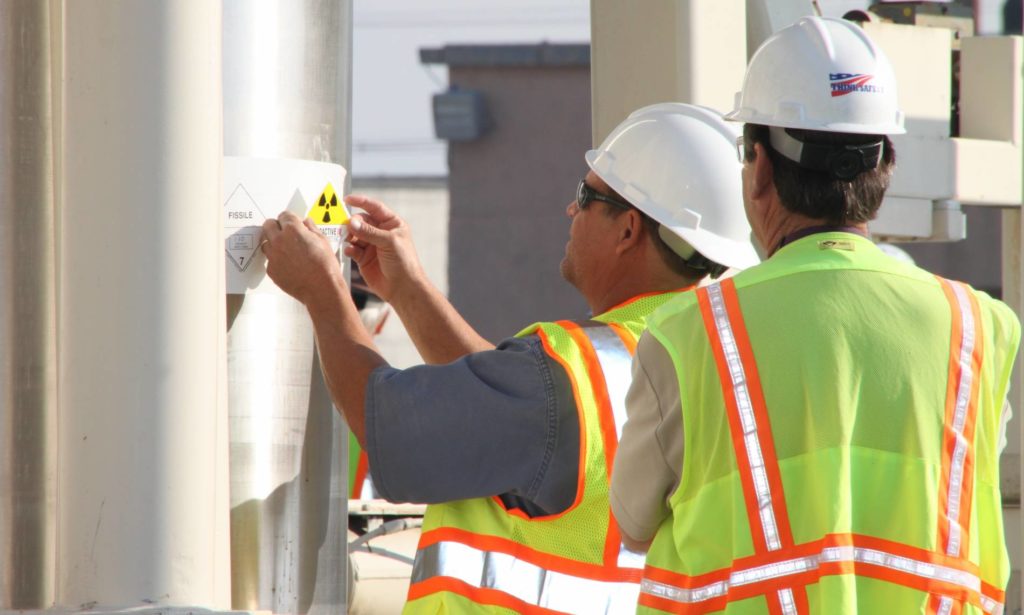
Faye Vlieger’s lungs were injured in a 2002 chemical-vapor incident at the Hanford site, a former plutonium production complex in Washington state where cleanup has been under way for 26 years. The Labor Department OK’d her claim in 2009, but under current rules, she’s sure she would have a problem: Given her symptoms, her doctor suspected phosgene — a poisonous gas — but she said she could never get an official answer.
“If my claim was going to go through today, it wouldn’t be approved,” said Vlieger, who helps others with their cases.
Washington Attorney General Bob Ferguson says cleanup workers at Hanford are exposed to noxious fumes and vapors even now. He sued over the matter in September.
“Despite 20 years of study and multiple reports, the federal government has not implemented a lasting solution,” the attorney general’s office said in a statement, “and workers continue to get sick.”
Read more in Inequality, Opportunity and Poverty
Unequal Risk
Some paint strippers are killing people. The EPA promised to act — but hasn’t.
For now, the only ones yanking methylene chloride paint removers off the shelves are retailers.



Join the conversation
Show Comments